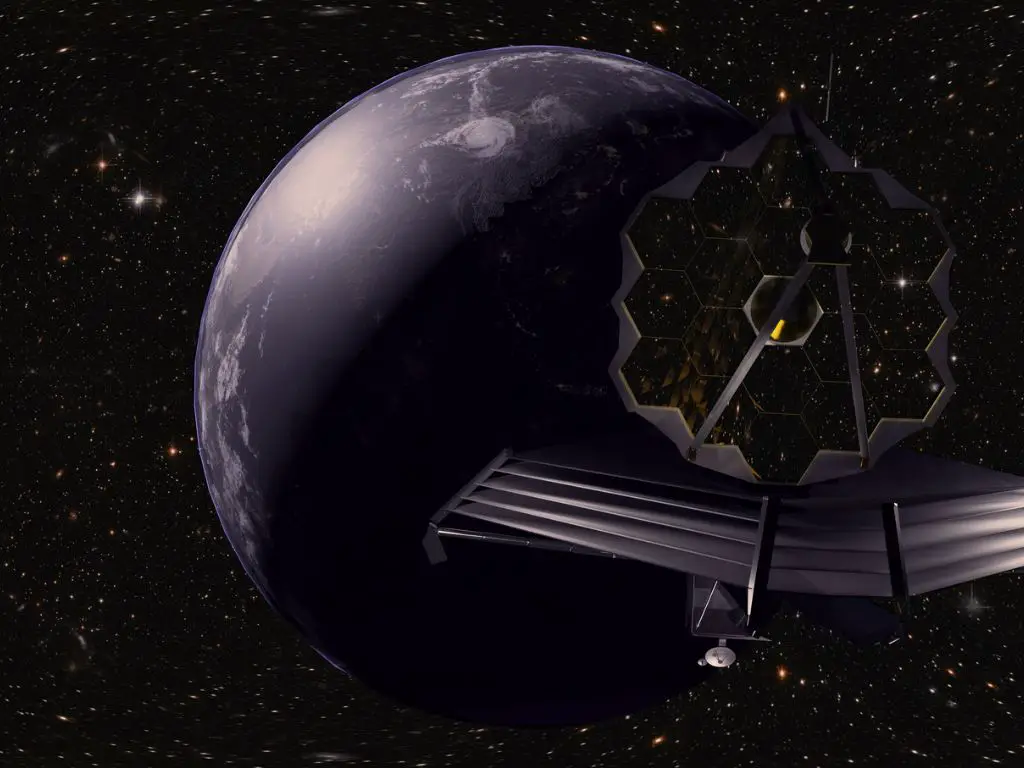The James Webb Telescope (JWST) is the world’s most powerful telescope. It will look farther into the universe than any other space telescope, allowing us to explore the mysteries of the cosmos like never before. But how does the JWST actually work? Let’s take a look at the inner workings of this remarkable telescope.
How Does the James Webb Telescope Work
The Basics of the James Webb Telescope
The James Webb Telescope is a large infrared space telescope. It has an aperture diameter of 6.5 meters and a primary mirror that is made up of 18 hexagonal segments. The entire telescope is designed to be a lightweight and highly maneuverable structure that can rotate and point to different parts of the sky. It will orbit the sun at the second Lagrange point (L2), about 1 million miles away from Earth, where it will remain stable and free from most of the light pollution that affects ground-based telescopes.

The Mirror
The James Webb Telescope’s primary mirror is made up of 18 hexagonal segments that are 1.3 meters in diameter. The segments are made from beryllium and coated with a thin layer of gold. The mirror is designed to be both lightweight and extremely strong, allowing it to survive the rigors of space travel. The mirror is also designed to be highly reflective, allowing it to capture the faintest of light.
The Instruments
The James Webb Telescope is equipped with four scientific instruments.
- The first is the Near-Infrared Camera, which will be used to observe distant galaxies, star formation, and planetary systems.
- The second instrument is the Mid-Infrared Instrument, which will be used to study the evolution of galaxies and stars, as well as to search for organic molecules in distant planetary systems.
- The third instrument is the Near-Infrared Spectrograph, which will be used to study the chemical composition of distant galaxies and planetary systems. Finally, the fourth instrument is the Fine Guidance Sensor, which will be used to ensure that the telescope is pointing accurately at its targets.

🔬 Subscribe to SciMail
Get the latest science discoveries straight to your inbox!
The Sunshield
The James Webb Telescope’s sunshield is a five-layer structure that is designed to keep the telescope’s instruments at temperatures as low as -233°C (-387°F). This is necessary in order for the telescope’s sensitive instruments to be able to detect faint infrared light from distant objects. The sunshield is made from a thin material known as Kapton and is designed to be both lightweight and highly reflective. The sunshield is also designed to be highly maneuverable, allowing it to be positioned in the optimal position for the best observations.
The Camera
The James Webb Telescope is equipped with a near-infrared camera, which is capable of taking extremely detailed images of distant galaxies, stars, and planetary systems. The camera is made up of four detectors, each of which is sensitive to a different range of wavelengths of light. This allows the camera to take images in both visible and near-infrared light. The camera is also designed to be highly sensitive, allowing it to detect faint objects that are billions of light years away.

Conclusion
The James Webb Telescope is a remarkable piece of technology that is set to revolutionize our understanding of the universe. Its powerful telescope, highly reflective mirror, and sensitive instruments are designed to allow us to observe the universe in unprecedented detail. The James Webb Telescope has open up a whole new world of exploration and discovery.


Leave a Reply